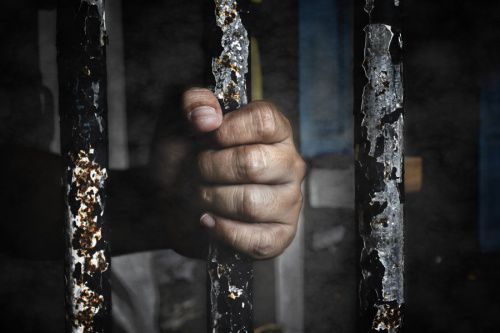Experts from across the political spectrum are calling for criminal justice reform, as a new White House report shows the human and economic costs of the current justice system.
“This is a singular moment in one of the most challenging issues facing our country,” Michael Waldman, president of the Brennan Center for Justice at New York University’s School of Law, said at a Monday press conference introducing the report, “Economic Perspectives on Incarceration and the Criminal Justice System.”
“What better way to bring people together than to look at those at the periphery of our society and say, what can we do together to need them?” Arthur Brooks, president of the American Enterprise Institute, stated at the press conference.
According to a new report from the White House Council of Economic Advisors, the U.S. incarcerates prisoners at a rate of 700 per 100,000 residents, “more than 4 times the world average,” and employs over 2.5 times the corrections officers. However, the U.S. employs 30 percent fewer police officers than the rest of the world.
Overall, the number of incarcerated is 4.5 times what it was in 1980. The report’s executive summary credits this increase to “longer sentences and higher conviction rates for nearly all offenses.”
Meanwhile, the crime rate has fallen. Property crime has dropped by 52 percent since 1980, and violent crime by almost 40 percent since then. The number of arrests has declined at a slower rate, meaning more arrests per crime. The number of drug arrests has increased by over 90 percent since 1980.
Incarcerations disproportionately occur in the black and Latino communities, as well as in populations that are less educated, poorer, and more prone to mental illness and drug abuse.
Members of the black community are incarcerated at a rate 3.5 times that of whites, and while blacks and Hispanics make up 30 percent of the overall population, they represent 50 percent of the prison population.
Over 65 percent of those incarcerated have not finished high school and over half are “functionally illiterate,” Brooks said. 50 percent suffer from mental illness, and 70 percent regularly use drugs.
And arrests aren’t the only problem. Fines are levied against anyone, regardless of income level, which means if an individual can’t pay a traffic ticket it can eventually turn into an arrest warrant. “Though fines and fees may be initially charged for minor offenses, the burden of these payments can increase for individuals that cannot pay them on time, with late fees, processing fees, interest, and even incarceration for failure to pay these debts,” the report stated.
According to one study cited in the report, in 2010 in New York City approximately 80 percent of defendants could not make bail at amounts less than $500.”
The cost to society is enormous. The U.S. spends $260 billion per capita on incarceration and $870 billion in the criminal justice system as a whole. The latter amount, however, belies the increasing disparity in the number of available public defenders versus the number of cases; the average number of cases per public defender has been estimated at over 350 per year.
“Our society pays an enormous material price for this,” Brooks said of incarceration. However, he added, “this really isn’t about money. This is about the lives that we’re throwing away.”
Waldman agreed, noting that “the magnitude of the problem has been hiding in plain sight.” He emphasized the importance of economic data, saying that “the rigor and the impact of economic analysis is matchless” in offering “measurable costs and benefits” and “consequences” of incarceration.
And there are also unseen costs of incarceration, the report noted. Children are growing up without their fathers around. Marriages fall apart with the husband in prison. Families fall into poverty without the breadwinner working. Children with a parent in prison are at higher risk for psychological disorders, struggles at school, and unemployment.
And for those who do get released from prison, life doesn’t get easier. Those with a criminal record are 50 percent less likely to receive a call back from a prospective employer or a job offer than another applicant with a similar application, and that disparity widens among black applicants.
Unemployment is a leading cause of recidivism — 60 percent of parolees are back behind bars within three years of their release, Brooks noted. Only one in three inmates has “access” to job training or other educational programs in prison, leaving them “entirely unprepared for life after prison,” he added.
What can be done to reduce America’s incarcerated population while keeping the country safe? Some claim that a tough-on-crime stance brought more criminals behind bars and was responsible for the drop in crime in the last couple of decades, but that might not necessarily be the case, the report claimed.
Yes, the crime rate goes down as the incarceration rate goes up, but there are diminishing returns for every increase in the incarceration rate. With more incarcerations, more low-level offenders are in jail.
Instead, other investments may actually pay better dividends for public safety. Several economic studies cited concluded that investments in police and in education are far more “cost-effective” than greater incarceration or stricter sentencing.
Police investment could pay off, according to one study in Oregon which found that after mass layoffs of state troopers, the incidents of traffic deaths and injuries spiked. A stronger police presence could possibly have resulted in fewer traffic incidents.
“Offering more correctional education and job training for inmates and the formerly incarcerated can reduce barriers to reentry and decrease recidivism,” the report’s conclusion suggested.
And a higher graduation rate could mean fewer incarcerations in the future. One 2004 study estimated that, according to 1990 costs and benefits, “a 1 percent increase in the total high school graduation rate generates a $1.4 billion benefit due to reductions in crime rates.”
Photo credit: pixs4u via www.shutterstock.com.

